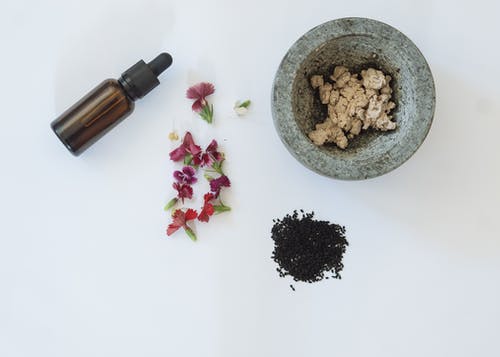Dermatitis: Types and Treatments
The term Dermatitis is used to describe a variety of skin disorders that produce irritation or inflammation. While dermatitis types...
-
This post is tagged in:
- dermatitis
- treatments
- types of dermatitis

T he term Dermatitis is used to describe a variety of skin disorders that produce irritation or inflammation. While dermatitis types and treatments can vary— contact dermatitis, Seborrheic Dermatitis, and Atopic dermatitis (eczema) are some common examples. Dry skin, red rashes, and itching are some of the symptoms of these disorders. Knowing about dermatitis types and treatments can help you figure out your next steps.
How does Dermatitis manifest itself?
Dermatitis is a term that refers to a variety of skin problems and rashes caused by a variety of factors including genetics, infections, a hyperactive immune system, allergies, irritating chemicals, and more. Rashes, redness, dry skin, and itching are all common symptoms.
Basically, the term "dermatitis" means "skin inflammation." The words "derm" plus "itis" signify "skin" and "inflammation," respectively. The term "inflammatory process of the skin" encompasses the whole phrase. The rashes may vary in severity from moderate to severe, however, based on the source, they can create a number of issues.
Dermatitis does not affect your health in any way. It's not infectious, and it's not an indication that your skin is dirty or sick. There are treatments and drugs available to help you manage your symptoms.
Types of Dermatitis
Dermatitis refers to a variety of skin conditions. Some may continue long-term, whereas others go through phases of "flare-ups" in-between no symptoms. Some varieties of dermatitis affect children more than others, while some affect adults more than children.
Atopic dermatitis
Eczema is another word for this condition. Among many kinds of dermatitis, atopic dermatitis runs in families, while most commonly beginning in childhood. It may, however, emerge in maturity.
Atopic dermatitis has no known cure. Complaints are frequently experienced in phases of flare-ups as well as times with few or no symptoms. Spots may seem dry, rough, and irritating during flare-ups.
Contact dermatitis
When a material comes into contact with your skin, subsequently triggering an allergic response, this is called contact dermatitis. Allergic reactions that sting, blister, or itch may result from these reactions.
Meanwhile, an allergic or irritating response might result in contact dermatitis. An aggressive version of contact dermatitis also occurs when an external substance affects the epidermis and triggers a response.
In Allergic Contact Dermatitis, an external material does not have to directly harm the epidermis, but an allergic substance can trigger your immunity to respond in such a manner that the immune system might!
Dyshidrotic dermatitis
In dyshidrotic dermatitis, the skin is unable to defend itself. This causes dry, itchy skin, which is often followed by tiny blisters. It mostly affects the hands and feet, although it can also affect persons who sweat a lot in these regions.

Seborrheic dermatitis
When it affects newborns, seborrheic dermatitis is often referred to as "cradle cap". The head is definitely the most prevalent site for this form of dermatitis, although it may also affect the cheeks, torso, and ears.
Skin discoloration, scaly patches, and dandruff are common symptoms. These symptoms might be exacerbated by stress or a lack of sleep.
Seborrheic dermatitis has no cure, although it may be properly treated.
Treatment of Dermatitis
Dermatitis therapy differs based on the origin and severity of your symptoms. Dermatitis therapy may involve one or several following, in combination with lifestyle changes and natural remedies suggestions below:
- Corticosteroid creams, ointments, or gels are applied to the afflicted skin.
- Using lotions or ointments that influence your immune response on the afflicted area (calcineurin inhibitors)
- Using regulated doses of naturally or artificially created light to treat the damaged region (phototherapy)
- For severe conditions, oral prednisolone or intravenous dupilumab are used.
- Wet dressings are a medical therapy for serious atopic dermatitis which entails administering a steroid to the affected area and covering it in moist bandages.
In summary, it might seem like you have one of these types of dermatitis. Before establishing a diagnosis, the physician will perform a physical examination and review your medical records. A dermatologist may sometimes determine the kind of eczema just by glancing at your skin.
Your physician may conduct a skin sample to determine the reason in certain circumstances. So that was all on Dermatitis types and treatments. You may seek out a dermatologist or even personally request a skin-patch test if you suspect you have some of the symptoms.




